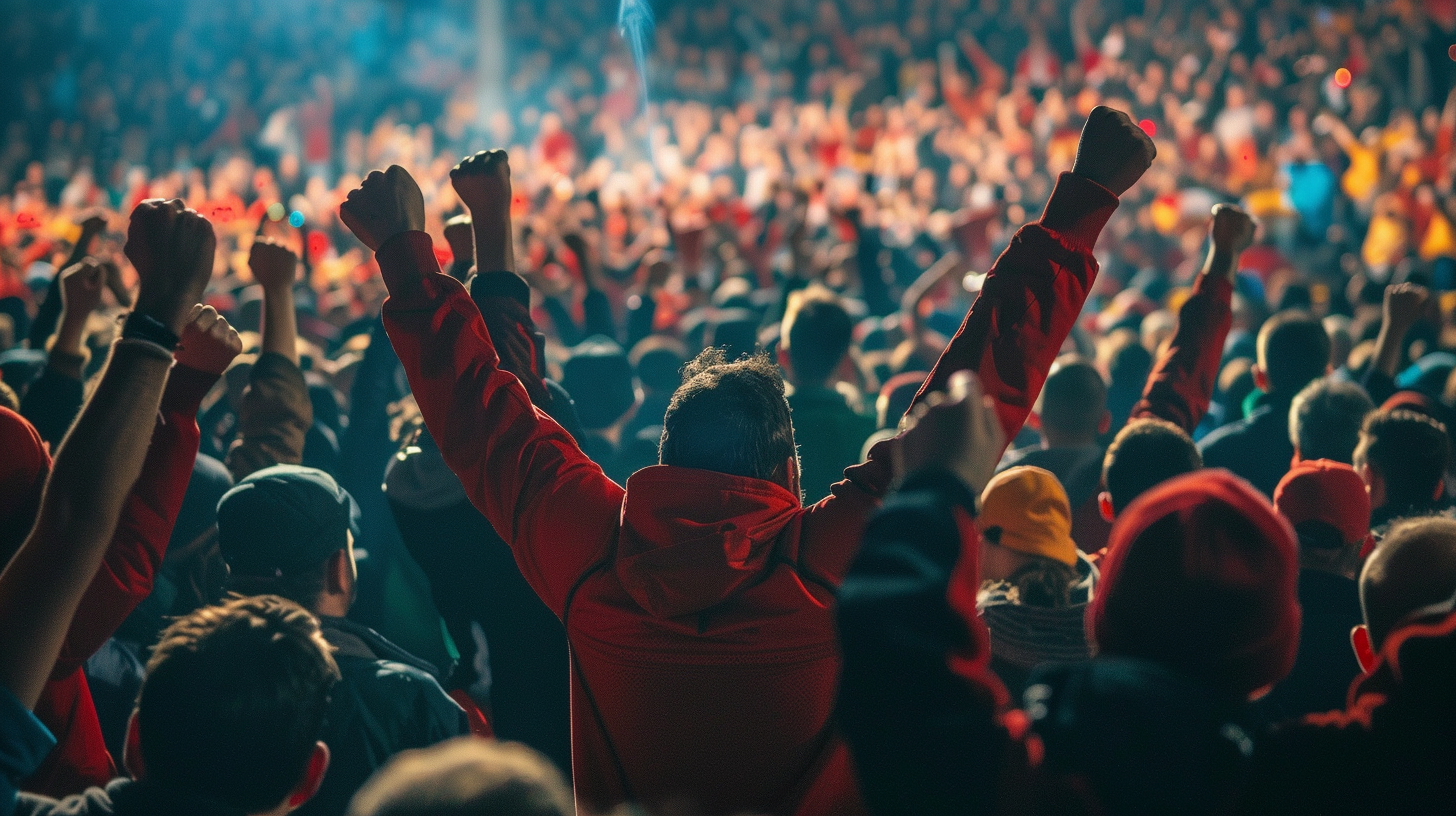Table of Contents Show
It’s as if the entire world stops spinning when mega sporting events roll around, capturing the attention of billions and sparking an economic frenzy that’s felt across the globe. We’re here to peel back the layers of this financial extravaganza, scrutinizing everything from the staggering investments in infrastructure to the surge in tourism, and the whirlwind of media rights and merchandising deals. But what’s often overlooked is the dual-edged sword these events wield on local economies and the long-term impacts that may not always glitter like the trophies they award. Join us as we explore the intricate dance between sport and commerce, where the stakes are as high as the passions it ignites.
Key Takeaways
- Mega sporting events significantly boost local economies by attracting visitors and increasing demand across various sectors.
- Infrastructure improvements for events create lasting benefits, including better transportation and versatile venues.
- Events increase global exposure, boosting tourism and presenting challenges like strained local infrastructure.
- They generate substantial revenue through media rights, sponsorships, and merchandising, while creating diverse employment opportunities.
The Economic Significance
Mega sporting events greatly boost local economies by attracting thousands of visitors, creating jobs, and stimulating various sectors. We’re talking about a significant influx of people ready to spend on accommodations, food, and entertainment, which in turn fills the coffers of local businesses. It’s a cycle that not only energizes the economy but also enhances the vibrancy of our communities.
We see firsthand how these events transform everyday venues into bustling hubs of activity. Restaurants, hotels, and shops experience a surge in demand, leading to increased earnings and, in many cases, the need to hire more staff. It’s a ripple effect that spreads far and wide, touching everything from local transport services to small mom-and-pop shops.
Additionally, we can’t overlook the global exposure these events offer. As the world watches, local culture and talent are showcased on an international stage, drawing attention and interest that last well beyond the final whistle. This kind of publicity is invaluable, opening doors for future tourism and investment opportunities that fuel our pursuit of freedom and prosperity.
The financial windfall from hosting such an event often translates into a bustling economy and a vibrant community. We’re not just spectators in this game; we’re active participants reaping the benefits of economic growth and cultural exchange. It’s a win-win situation that underscores the power of sports to unite and uplift, proving that the game’s impact extends far beyond the field.
Infrastructure and Investment
Beyond the immediate economic boost, hosting mega sporting events necessitates substantial investment in infrastructure, laying the groundwork for long-term benefits. When we delve into the specifics, we’re talking about a broad range of projects that not only serve the event itself but also promise enhanced quality of life for the community long after the final whistle blows. It’s about creating legacies that resonate with freedom and progress.
Here’s how we break it down:
-
Transportation Upgrades: Investing in roads, airports, and public transit systems guarantees that attendees can move freely and efficiently. This isn’t just for the duration of the event; it’s about leaving a framework that supports economic growth and mobility for years to come.
-
Stadiums and Sports Complexes: These are the heart of the event. We’re not just building venues; we’re creating landmarks. These facilities often become hubs for future sporting events, concerts, and community gatherings, driving local economies.
-
Technology Infrastructure: Implementing cutting-edge technology, from telecommunications to energy solutions, not only supports a seamless event experience but also propels the host city into the future, fostering innovation and attracting tech-savvy businesses and talents.
-
Environmental Initiatives: Sustainable infrastructure projects, such as green venues and waste management systems, demonstrate a commitment to the planet that can inspire change globally and locally, setting new standards for future events.
Investing in infrastructure for mega sporting events isn’t just about the here and now; it’s a strategic move towards a more connected, sustainable, and vibrant future. We’re laying down the tracks for generations to come, ensuring they have the freedom to move, innovate, and thrive.
Tourism Boost and Challenges
We’ve observed that mega sporting events greatly increase visitor numbers, highlighting a crucial boost to tourism. However, this influx often puts a strain on local infrastructure, challenging the host city’s capacity to accommodate the surge. Let’s explore how these factors interplay to shape the economic impact of such events.
Increased Visitor Numbers
Hosting mega sporting events greatly boosts local tourism, drawing in thousands of visitors from around the globe. We see a significant influx of people enthusiastic to experience not just the event but also the culture, cuisine, and sights of the host city. This surge in visitors translates into a myriad of benefits:
- Increased Revenue: Local businesses see a spike in sales, from hotels to restaurants.
- Global Exposure: The city gains international attention, potentially leading to future tourism.
- Cultural Exchange: Visitors and locals share cultural experiences, fostering global understanding.
- Job Creation: Temporary positions open up, providing employment opportunities.
We’re in it for the freedom to explore, connect, and experience the world in its full vigor, and these events grant us just that.
Local Infrastructure Strain
While the influx of visitors during mega sporting events brings numerous benefits, it also places a significant strain on the host city’s local infrastructure. We’re talking about roads jammed with traffic, public transport bursting at the seams, and not to mention the wear and tear on facilities. It’s a double-edged sword. On one hand, we’re drawing in crowds, boosting local businesses, and shining a spotlight on the city. On the other, we’re pushing our infrastructure to its limits.
| Benefit | Challenge |
|---|---|
| Increased revenue | Overcrowded public transport |
| Global visibility | Traffic congestion |
| Boost in local business | Strain on utilities |
| Cultural exchange | Overuse of public spaces |
| Employment opportunities | Maintenance costs |
We love the game, the excitement, and the unity it brings. Yet, we mustn’t overlook the freedom to move and thrive amidst these grand celebrations.
Media Rights and Revenue
Turning our attention to media rights and revenue, we’re seeing an undeniable surge in the value of broadcasting deals. This uptick is closely tied to the growth of streaming services, bringing sports to a wider, global audience. We’ll explore how these factors combine to reshape the financial landscape of mega sporting events.
Broadcasting Deals Expansion
The expansion of broadcasting deals has significantly increased media rights revenue for mega sporting events. We’ve seen this revenue surge for several reasons:
- Global Reach: More channels across the world mean more eyes on the event, driving up value.
- Exclusive Content: Securing exclusive broadcasting rights makes channels a must-have, pushing up prices.
- Multi-Platform Distribution: Deals now often include various platforms, broadening audience reach.
- Increased Competition: More broadcasters vying for rights means higher bids.
This expansion isn’t just beneficial for the event organizers; it’s a win for fans too. We’re now able to access our favorite sports in ways that fit our lives, embracing the freedom to choose how, when, and where we watch.
Streaming Services Growth
Streaming services’ meteoric rise has revolutionized how we access and monetize media rights for mega sporting events, greatly boosting revenue streams. We’re witnessing a shift where fans demand the freedom to watch their favorite sports anywhere, anytime. This isn’t just changing the game; it’s rewriting the playbook on engagement and revenue generation. Streaming platforms offer tailored viewing experiences, drawing in more subscribers and, by extension, more dollars. They’re not just on the sidelines; they’re becoming key players in the sports media landscape. By tapping into advanced analytics, we’re also optimizing content delivery to match viewer preferences, ensuring every pass, goal, or touchdown reaches its target audience. It’s clear: streaming isn’t just the future; it’s the now, opening up a world where freedom meets the fervor of sports fandom.
Merchandising and Sponsorships
Merchandising and sponsorships greatly boost the revenue of mega sporting events, directly influencing their economic success. We’ve seen time and again how these elements play a pivotal role in not just sustaining but also expanding the scope and reach of these events. By tapping into the vast potential of merchandising and securing lucrative sponsorships, organizers harness new revenue streams that go beyond ticket sales and broadcasting rights.
Let’s break down why merchandising and sponsorships are so crucial:
- Brand Exposure: Sponsorships offer brands unparalleled visibility, associating them with the excitement and passion of sports. This exposure is a powerful marketing tool that drives consumer engagement and loyalty.
- Revenue Generation: Merchandise sales, including apparel, accessories, and memorabilia, create significant additional revenue. Fans are enthusiastic to show their support and connect with their favorite teams and athletes, and they’re willing to pay for it.
- Fan Experience Enhancement: Exclusive merchandise and sponsor activations enhance the fan experience, making events more memorable and engaging. These elements add an extra layer of excitement and interaction that goes beyond the game itself.
- Global Reach: Both merchandising and sponsorships extend the event’s reach globally, tapping into international markets and fanbases. This worldwide exposure not only boosts sales but also elevates the event’s prestige on a global scale.
We’re committed to exploring these avenues, recognizing their power to transform the economic landscape of sports events. By embracing the freedom to innovate in merchandising and to forge meaningful sponsorships, we’re harnessing new possibilities and ensuring the continued growth and success of these mega events.
Employment Opportunities
Beyond boosting revenue through merchandising and sponsorships, we’re also releasing vast employment opportunities within the world of mega sporting events. These events aren’t just about the thrill of the game; they’re economic engines that drive employment across various sectors. We’re talking about jobs that range from construction and hospitality to retail and security, not to mention the gig economy that flourishes around these events.
We’re seeing a surge in temporary and permanent positions that cater to the massive influx of fans and athletes. Let’s not overlook the local businesses that experience a boom, needing more hands on deck to meet the increased demand. This isn’t just about the big players; it’s about creating a ripple effect that benefits everyone involved.
Furthermore, we’re empowering individuals by offering them a wide array of employment options. Whether it’s a student looking for a summer job or a professional expanding their portfolio, these events open doors that might have remained closed otherwise. It’s about giving people the freedom to choose their path, to learn new skills, and to be part of something bigger than themselves.
We’re not just building stadiums; we’re building careers and opportunities. From the ground up, every nail, every seat, every banner represents a job, a chance for someone to grow. And as these events come and go, the skills and experiences gained remain, fostering a more versatile and resilient workforce.
Long-Term Economic Effects
How do these mega sporting events shape the economic landscape in the years that follow their conclusion? It’s a question we’ve all pondered, especially when considering the hefty investments made by host cities and countries. Let’s explore the long-term economic effects that often don’t make the headlines but impact our quest for freedom and prosperity.
-
Infrastructure Legacy: These events often lead to the construction of state-of-the-art sports facilities and transportation upgrades. While the initial expenditure is high, the long-term benefits include improved city infrastructure and the potential for hosting future events, which can boost the local economy for years to come.
-
Tourism Boost: The global exposure a city receives from hosting can lead to a sustained increase in tourism. This isn’t just a one-time spike; the allure of a city that once hosted a mega sporting event can draw visitors for decades, contributing to a vibrant, open economy.
-
Enhanced Global Image: Successfully hosting these events can elevate a city or country’s status on the world stage, attracting foreign investment and fostering trade relationships. This open door policy can lead to a free-flowing exchange of ideas, goods, and services, enriching the local economy.
-
Sports Development: The legacy of these events can lead to increased participation and investment in sports at all levels. This not only fosters a healthier, more active society but also opens up new business opportunities in sports management, merchandise, and training facilities.
In short, while the fireworks may fade, the economic impact of mega sporting events can light up the path to freedom and prosperity for years to come.
Conclusion
To sum up, we’ve seen how mega sporting events are not just games; they’re goldmines of economic opportunity. From building stadiums to selling jerseys, every aspect brings in a tidal wave of benefits. Sure, they come with their hurdles, but the surge in tourism, media revenue, and job creation often outweighs the challenges. These events don’t just leave a legacy of memories; they reshape economies, turning cities into buzzing hives of prosperity long after the final whistle has blown.








